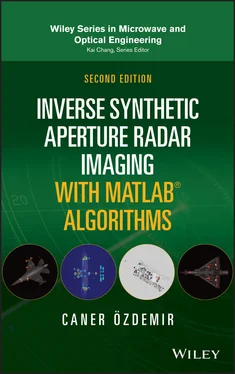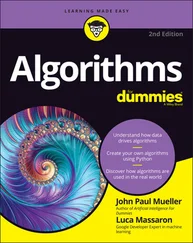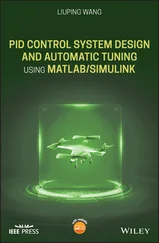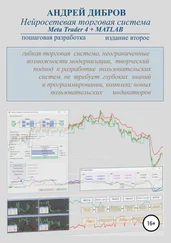In Chapter 12in which some examples based on SAR/ISAR imaging technologies are provided, I have previously introduced algorithms called antenna SAR (ASAR) and antenna coupling SAR (ACSAR) as the unique radar imaging algorithms to image antenna mounted on a platform‐to‐radar receiver interaction over the target and to image platform coupling over the antennas mounted on a target, respectively. In this edition of the book, I have added some new applications such as ground‐penetrating radar (GPR) and through‐the‐wall imaging radar (TWIR) that also make use of SAR/ISAR imaging algorithms. Measured examples of GPR and TWIR radar images are provided to demonstrate how SAR/ISAR imaging algorithms can be effectively used in some popular radar imaging applications.
I hope that, with the new edition of the book “Inverse Synthetic Aperture Radar Imaging with MATLAB Algorithms,” the reader would benefit more in terms of abovementioned new ISAR imaging topics and also from the Matlab codes provided at the end of chapters.
All MATLAB files may be accessed on the following FTP site: ftp://ftp.wiley.com/public/sci_tech_med/inverse_synthetic.
Caner Özdemir Mersin, October 2020
I would like to address special thanks to the people below for their help and support during the preparation of this book. First, I am thankful to my wife, Betül and my three children for their patience and continuous support while writing this book. I am very grateful to Dr. Hao Ling, Emeritus Professor in Engineering of the University of Texas at Austin for being a valuable source of knowledge, ideas, and also inspiration throughout my academic carreer. He has been a great advisor since I met him, and his guidance on scientific research is priceless to me.
I would like to express my sincere thanks to my former graduate students; Dr. Şevket Demirci, Dr. Enes Yiğit, Dr. Betül Yılmaz, Dr. Deniz Üstün, Özkan Kırık, and Dr. Hakan Işıker who have helped carrying out some of the research presented in this book. I would also like to thank my graduate student Rasheed Khankan for his help in preparing references.
Last but not least, I would like to convey my special thanks to Dr. Kai Chang for inviting me to write the first and then second edition of the book. Without his kind offer, this book project would not have been possible.
Caner Özdemir
1DOne‐dimensional2DTwo‐dimensional3DThree‐dimensionalACSARAntenna coupling synthetic aperture radarADCAnalog‐to‐digital converterANNArtificial neural networkASARAntenna synthetic aperture radarATCAutomatic target classificationATRAutomatic target recognitionBi‐ISARBistatic inverse synthetic aperture radarBPABack‐projection algorithmCADComputer aided designCDFCumulative density functionCFARConstant false alarm rateCOContrast optimizationCo‐polCo‐polarizationCPCircular polarizationCross‐polCross‐polarizationCSAChirp scaling algorithmCWContinuous waveDCRDihedral corner reflectorsDFTDiscrete Fourier transformDTVDigital televisionEFIEElectric field integral equationEMElectromagneticESMExploding source modelFMFrequency modulatedFMCWFrequency modulated continuous waveFTFourier transformGOGeometric opticsGPRGround‐penetrating radarGPSGlobal positioning systemGWNGaussian white noiseHHorizontalHHHorizontal–horizontalHSAHyperbolic summation algorithmHVHorizontal–verticalIInphaseIDFTInverse discrete Fourier transformIFTInverse Fourier transformIMUInertial measurement unitInSARInterferometric SARISARInverse synthetic aperture radarJTFJoint time‐frequencyKBKbytesKMAKirchhoff migration algorithmLLeftLFMLinear frequency modulatedLFMCWLinear frequency modulated continuous waveLHCPLeft‐hand circular polarizedLHEPLeft‐hand elliptically polarizedLLLeft–leftLOSLine of sightLPLinear polarizationLRLeft–rightMBMbytesMDAMap‐drift autofocusMFIEMagnetic field integral equationMIMOMultiple‐input multiple‐outputMOCOMPMotion compensationMu‐ISARMulti‐static inverse synthetic aperture radarPECPerfect electric conductorPGAPhase gradient autofocusP‐ISARPassive inverse synthetic aperture radarPOPhysical opticsPolSARPolarimetric synthetic aperture radarPPPProminent point processingPRFPulse repetition frequencyPRIPulse repetition intervalPSDPower spectral densityPSFPoint spread functionPSLRPeak‐to‐sidelobe ratioPSMAPhase‐shift migration algorithmPSRPoint‐spread‐responseQQuadratureQDQuadradure detectionRRightRCMRange cell migrationRCMCRange cell migration correctionRCSRadar cross sectionRDARange‐doppler algorithmRFRadiofrequencyRGBRed green blueRHCPRight‐hand circular polarizedRHEPRight‐hand elliptically polarizedRLRight–LeftRLOSRadar line of sightRRRight–rightRxReceiver[S]Polarization scattering matrixSACShift and correlateSARSynthetic aperture radarSBRShooting and bouncing raySFCWStepped frequency continuous wavesincSinus cardinalisSNRSignal‐to‐noise ratioSPUSignal processing unitSTFTShort‐time Fourier transformTCRTrihedral corner reflectorTFDSTime‐frequency distribution seriesTWIRThrough‐the‐wall imaging radarTWRThrough‐the‐wall radarTxTransmitterVVerticalVHVertical–horizontalVNAVector network analyzerVVVertical–verticalω‐kAFrequency‐wavenumber algorithm
1 Basics of Fourier Analysis
1.1 Forward and Inverse Fourier Transform
Fourier transform (FT) is a common and useful mathematical tool that is utilized in innumerous applications in science and technology. FT is quite practical especially for characterizing nonlinear functions in nonlinear systems, analyzing random signals, and solving linear problems. FT is also a very important tool in radar imaging applications as we shall investigate in the forthcoming chapters of this book. Before starting to deal with the FT and inverse Fourier transform (IFT), a brief history of this useful linear operator, and its founders are presented.
1.1.1 Brief History of FT
Jean Baptiste Joseph Fourier, a great mathematician, was born in 1768, Auxerre, France. His special interest in heat conduction led him to describe a mathematical series of sine and cosine terms that could be used to analyze propagation and diffusion of heat in solid bodies. In 1807, he tried to share his innovative ideas with researchers by preparing an essay entitled as On the Propagation of Heat in Solid Bodies . The work was examined by Lagrange, Laplace, Monge, and Lacroix. Lagrange's oppositions caused the rejection of Fourier's paper. This unfortunate decision cost colleagues to wait for 15 more years to meet his remarkable contributions to mathematics, physics, and especially on signal analysis. Finally, his ideas were published thru the book The Analytic Theory of Heat in 1822 (Fourier 1955).
Discrete Fourier transform (DFT) was developed as an effective tool in calculating this transformation. However, computing FT with this tool in the nineteenth century was taking a long time. In 1903, C. Runge has studied on the minimization of the computational time of the transformation operation (Runge 1903). In 1942, Danielson and Lanczos had utilized the symmetry properties of FT to reduce the number of operations in DFT (Danielson and Lanczos 1942). Before the advent of digital computing technologies, James W. Cooley and John W. Tukey developed a fast method to reduce the computation time of DFT operation. In 1965, they published their technique that later on has become famous as the fast Fourier transform (FFT) (Cooley and Tukey 1965).
1.1.2 Forward FT Operation
The FT can be simply defined as a certain linear operator that maps functions or signals defined in one domain to other functions or signals in another domain. The common use of FT in electrical engineering is to transform signals from time domain to frequency domain or vice‐versa. More precisely, forward FT decomposes a signal into a continuous spectrum of its frequency components such that the time signal is transformed to a frequency domain signal. In radar applications, these two opposing domains are usually represented as “spatial‐frequency (or wave‐number)” and “range (distance).” Such use of FT will be often examined and applied throughout this book.
Читать дальше












